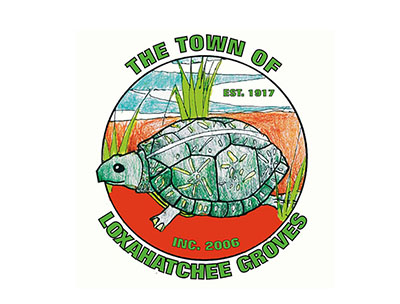Two weeks after approving a budget keeping its tax rate unchanged, the Loxahatchee Groves Town Council debated the merits of dropping the rate at the town’s final budget hearing Wednesday, Sept. 18.
Early in the budget cycle, the council set its preliminary property tax rate at 4.00 mills, up from 3.00 mills. The assessment for roads and drainage was set at $250, up from $200, and the annual solid waste assessment was set at $450, up from $400.
In the end, the council cut enough out of the budget across several workshops to leave the property tax rate and the roads and drainage assessment unchanged from 2024, only raising the solid waste assessment $50 to $450.
At the first budget hearing on Tuesday, Sept. 3, the council agreed unanimously to adopt the town’s property tax rate at 3.00 mills, unchanged from the previous year. Due to increasing property values, the rate of 3.00 mills will bring in some additional revenue to the town. It is 10.9 percent above the rolled-back rate of 2.7048 mills, which is the rate that would bring in the same amount of revenue as fiscal year 2024.
During the budget process, both Town Manager Francine Ramaglia and Project Coordinator Jeff Kurtz noted that the town is entering a challenging financial period with extra money from the federal government’s American Rescue Plan Act (ARPA) and Palm Beach County’s sales surtax both expiring. Those two funding sources have been key drivers of the town’s money for capital improvements in recent years. Meanwhile, inflation, along with a challenging job market for keeping employees, has led to an increase in costs.
However, at the final budget hearing, Councilman Robert Shorr and Councilwoman Laura Danowski urged further lowering the tax rate to the rolled-back rate of 2.7048 mills, which would require removing approximately $97,000 in additional spending from the budget.
“We’ve already increased everybody’s garbage fees by 25 percent,” Shorr said. “I think we need to roll it back to 2.7… I think there’s over half a million dollars just thrown into CIP [capital improvement plan] stuff.”
“I wouldn’t object to going less than 3.00,” Danowski agreed. “I think there are some places where we can trim just a little more.”
Because it is above the rolled-back rate, keeping the tax rate at 3.00 mills would require at least a 4-1 supermajority vote.
Councilwoman Phillis Maniglia was not happy with the last-minute suggestion, particularly after the council had just heard several residents beg them for help in fixing worsening drainage issues on their roadways.
“No roads are going to paved in 2025 and possibly 2026 if you don’t give us the millage to be able to run this town properly,” Maniglia said.
Kurtz noted that lowering the tax rate would not only impact spending in the new fiscal year that began Oct. 1, but likely in the years to come, since raising it even back to 3.00 mills in fiscal year 2026 would likely require a unanimous vote.
Ramaglia suggested that instead of lowering the tax rate, the council instead remove $97,000 from the spending plan and put it in a special “community relief fund” to help residents fund emergency projects.
“Earlier this evening we heard from people that they would be willing to do a 50-50 [on drainage and road projects],” Ramaglia said. “There’s no room for 50-50s if we drop the millage.”
She added that the tax rate was advertised at 4.00 mills, much higher than the proposed 3.00 mills, and it did not generate a major outcry from residents.
It took several motions for the council to get to a compromise.
First, Shorr made a motion to accept the rolled-back rate of 2.7048 mills, which failed 3-2 with only Shorr and Danowski in favor.
Vice Mayor Marge Herzog then made a motion to keep the rate unchanged at 3.00 mills. While that same motion passed unanimously on Sept. 3, this time the vote was 3-2, which was not good enough for passage, since a supermajority was required.
A motion by Shorr to set the rate at 2.8587 mills also failed, as did one by Maniglia to keep it 3.00 mills but withhold $100,000 for the relief fund.
Danowski then said that she would support leaving the rate at 3.00 mills if $150,000 was cut out of the budget and put in the relief fund. A motion to that effect passed 4-1 with Shorr dissenting.
The overall budget, with the discussed revisions, also passed 4-1 with Shorr dissenting.








